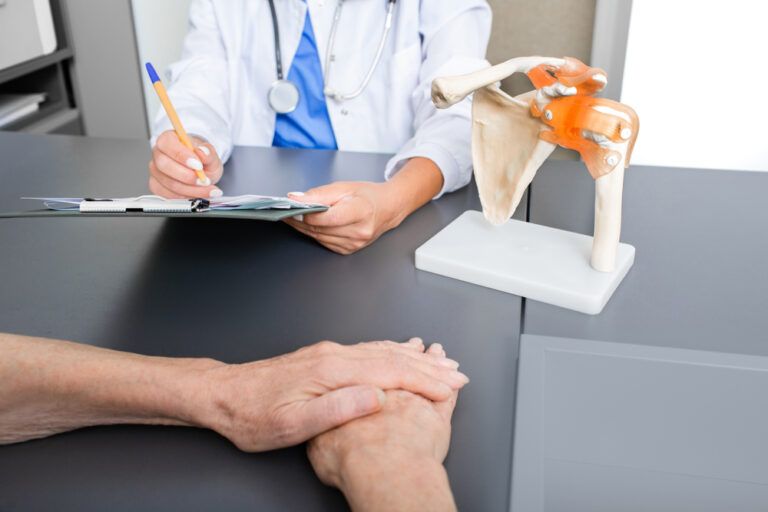Regenerative Medicine in Orthopedics: A Patient’s Guide to Healing from Within

At Space Coast Orthopedic in Merritt Island, FL, patients are increasingly curious about regenerative medicine and its potential role in orthopedic care. Unlike conventional treatments that may focus on symptom relief, regenerative techniques aim to harness the body’s own healing mechanisms to restore tissue function and structure. For individuals dealing with chronic joint pain, tendon injuries, or degenerative conditions, understanding these emerging options can offer new hope and greater autonomy in their treatment journey.
The Foundation of Regenerative Medicine
Regenerative medicine refers to a category of therapies designed to stimulate the body’s natural repair processes, especially in tissues that have limited ability to heal themselves—such as cartilage, tendons, and ligaments. Rather than introducing foreign substances or relying solely on surgical interventions, these therapies use biological materials like cells, proteins, and growth factors derived from the patient’s own body or carefully processed donor sources.
The field has gained particular momentum in orthopedics due to the mechanical stress and wear-and-tear the musculoskeletal system endures. For instance, cartilage—which cushions joints—is notoriously slow to regenerate, and tendon healing can take months or longer with traditional care. Regenerative treatments aim to accelerate these processes, reduce inflammation, and improve long-term outcomes without invasive procedures.
Platelet-Rich Plasma (PRP) Therapy
One of the most well-known regenerative therapies is platelet-rich plasma (PRP). This treatment involves drawing a small sample of the patient’s blood, processing it in a centrifuge to isolate platelets, and then injecting the concentrated solution directly into the injured or inflamed area. Platelets contain growth factors that play a vital role in tissue repair, signaling the body to initiate healing responses at the cellular level.
PRP is commonly used to treat tendonitis, osteoarthritis, ligament injuries, and muscle strains. It is especially popular among athletes and active individuals looking to avoid surgery or reduce recovery time. Although not universally effective, many patients report improvements in pain and function after a series of injections. PRP is minimally invasive and generally well-tolerated, with side effects limited to minor soreness or swelling at the injection site.
Stem Cell Therapy in Orthopedic Applications
Stem cell therapy represents another promising avenue in regenerative orthopedics. Unlike most adult cells, stem cells have the ability to differentiate into various tissue types—such as bone, cartilage, or muscle—making them ideal for healing injuries that involve structural damage. These cells are usually harvested from the patient’s bone marrow or adipose (fat) tissue, then processed and injected into the target area.
In orthopedic settings, stem cell injections are being studied and used for cartilage regeneration in osteoarthritis, healing torn ligaments, and repairing meniscal injuries. Early evidence suggests that stem cells not only contribute to tissue rebuilding but also modulate inflammation and pain. However, it is essential to note that the use of stem cells in orthopedics is still under active investigation, and clinical outcomes can vary depending on the source of the cells, the condition being treated, and the patient’s overall health.
Emerging Techniques in Regenerative Medicine
While PRP and stem cells are the most recognized treatments, regenerative medicine encompasses a broader range of techniques. One such approach is bone marrow aspirate concentrate (BMAC), which combines stem cells and other regenerative factors from the bone marrow into a single injectable therapy. BMAC is often used for more advanced joint degeneration or in surgical procedures to enhance tissue healing.
Other experimental methods include amniotic membrane injections and extracellular matrix scaffolds, both of which provide a structural foundation that supports cellular growth and tissue regeneration. These newer strategies are typically explored in clinical trials or specialized settings and are not yet widely available. Nevertheless, they represent the cutting edge of what regenerative medicine might offer in the near future.
Conditions Commonly Treated with Regenerative Therapies
Patients often wonder whether their condition is appropriate for regenerative treatments. While only a qualified medical provider can make that determination, the following conditions are among the most commonly explored in research and clinical applications:
- Knee osteoarthritis
- Rotator cuff injuries
- Tennis elbow (lateral epicondylitis)
- Achilles tendonitis
- Patellar tendinopathy
- Ligament sprains
- Meniscus tears
These therapies are typically recommended when conservative approaches like physical therapy and medications haven’t provided relief, but before surgical intervention becomes necessary. In some cases, regenerative medicine may also be used post-surgically to support tissue repair and reduce healing time.
What Patients Should Know Before Starting Treatment
While the appeal of regenerative medicine is understandable, it is crucial for patients to approach these treatments with realistic expectations. Not all therapies are equally effective, and outcomes can depend on factors like age, overall health, activity level, and the severity of the condition. Additionally, some regenerative options are not covered by insurance and may require out-of-pocket payment.
Patients should also ask about the clinical evidence supporting each therapy, the credentials of the provider offering it, and the risks involved. Although side effects are generally minimal, they can include infection, allergic reactions, or procedural discomfort. A thoughtful, individualized discussion with a knowledgeable specialist can help patients make informed decisions that align with their goals and values.
Looking Forward: The Future of Regenerative Orthopedics
The future of regenerative medicine in orthopedics is promising. Ongoing clinical trials and technological advancements are expanding the possibilities for personalized, effective treatments that not only relieve symptoms but also restore function and quality of life. Innovations in bioengineering, cellular manipulation, and data analytics are expected to improve both the precision and predictability of regenerative therapies.
For patients in Merritt Island and surrounding areas, keeping informed about these developments can open new doors for managing joint pain, sports injuries, and degenerative conditions. Space Coast Orthopedic encourages patients to explore their options, ask thoughtful questions, and stay engaged in their treatment journey, especially as new possibilities in regenerative care continue to emerge.
Resources
Centeno, C. J., & Freeman, M. D. (2021). Platelet-Rich Plasma and Stem Cells in Orthopedic Regenerative Medicine. Current Reviews in Musculoskeletal Medicine.
Mautner, K., & Kneer, L. (2020). Stem Cell Use in Sports Medicine: Current Evidence and Future Directions. Journal of the American Academy of Orthopaedic Surgeons.
Andia, I., & Abate, M. (2019). Regenerative Therapies for Musculoskeletal Conditions Using Platelet-Rich Plasma and Stem Cells: A Review. International Journal of Molecular Sciences.


Recent Comments